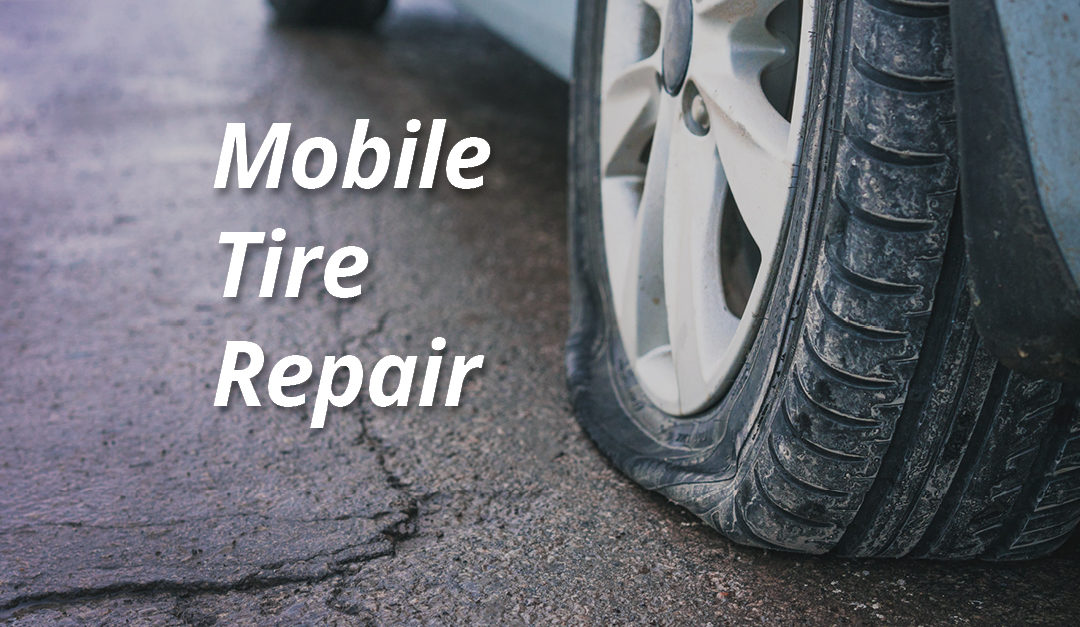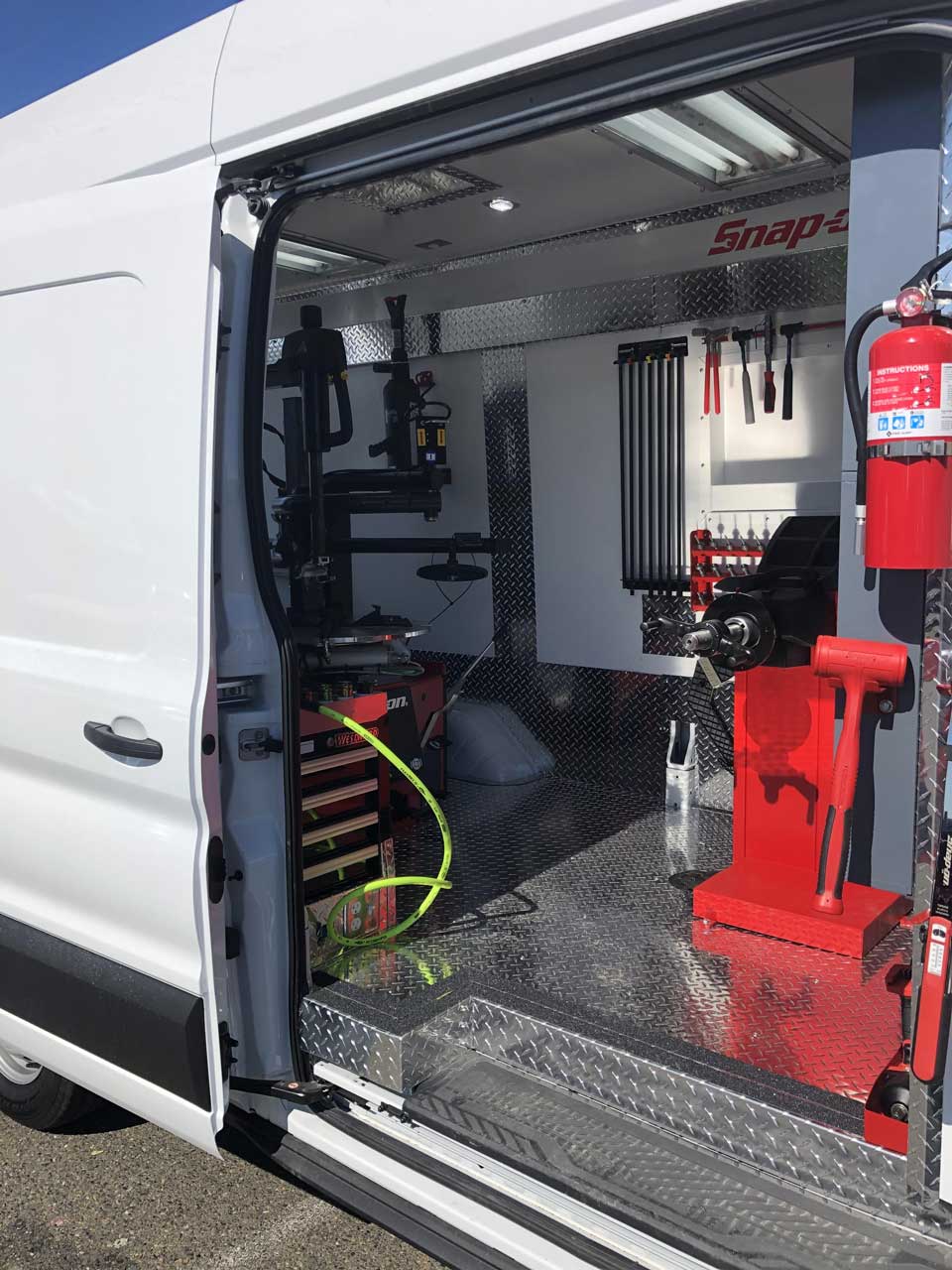Tire Service: Proven Approaches for Optimal Tire Upkeep and Treatment
From making sure correct tire stress to normal rotation and positioning, there are tested techniques that can dramatically expand the life expectancy of your tires and improve general driving experience. Allow's dig into the globe of tire solution and uncover the keys to maintaining your tires in top-notch shape for the long haul - Flat Tire Repair Las Vegas.
Importance of Tire Pressure
Proper tire pressure is an important consider guaranteeing optimum automobile efficiency and security on the roadway. Keeping the recommended tire stress degrees supplied by the producer offers various benefits. Firstly, ample tire pressure advertises much better fuel efficiency, as under-inflated tires can lead to boosted rolling resistance, causing the engine to work harder and eat even more gas. Second of all, correct tire stress makes certain even tread wear, boosting tire durability and conserving money in the long run by postponing the need for early substitutes. Furthermore, properly inflated tires add to enhanced handling and stopping abilities, vital for secure driving in various roadway problems. Over-inflated tires, on the other hand, can cause lowered traction and a harsher experience. Conversely, under-inflated tires are susceptible to overheating, which can result in mishaps and blowouts. Routinely examining and readjusting tire pressure, particularly in the past long journeys, is a basic yet reliable way to improve automobile performance, prolong tire life-span, and prioritize safety on the road.
Tire Turning Guidelines
When taking into consideration tire rotation standards, it is essential to understand the importance of this upkeep task in optimizing tire life expectancy and preserving ideal car performance. Tire rotation entails transforming the placement of each tire on a car to make sure even tread wear. Front tires have a tendency to wear faster than rear tires as a result of guiding forces, making regular rotation essential for balanced wear patterns. The advised rotation pattern differs relying on whether an automobile is front-wheel, rear-wheel, all-wheel, or four-wheel drive. Usually, tires should be revolved every 5,000 to 7,500 miles, or as suggested in the automobile handbook. Neglecting tire turning can lead to uneven wear, influencing handling, traction, and possibly compromising automobile safety and security. By sticking to appropriate rotation standards, chauffeurs can expand the life of their tires, boost fuel performance, and improve overall driving experience. Routine turning is a straightforward yet effective upkeep method that adds considerably to tire longevity and car efficiency.

Benefits of Wheel Placement
Ensuring appropriate wheel placement after tire turning is critical for maintaining balanced wear patterns and taking full advantage of lorry efficiency. Wheel placement refers to the modification of the angles of the wheels to the maker's requirements. Among the crucial benefits of wheel alignment is improved steering and handling action. When the wheels are appropriately straightened, it minimizes guiding web initiative, ensuring a smoother and a lot more regulated driving experience. In addition, right wheel positioning assists to extend the life-span of your tires. Misaligned wheels can create irregular tire wear, bring about premature tire substitute and raised upkeep expenses.

Tire Footstep Deepness Examine
Carrying out a routine assessment of tire step depth is necessary for keeping secure driving problems and prolonging the lifespan of your tires. The tread on your tires plays a crucial role in providing traction, especially in unsafe or damp problems. To inspect your tire walk deepness, you can utilize a walk depth scale or the dime examination. The advised step deepness goes to the very least 2/32 of an inch. If the step deepness is this hyperlink listed below this limit, it is time to change your tires to guarantee optimum efficiency and security when traveling. Uneven tread wear can show concerns with tire suspension, alignment, or pressure, highlighting the importance of normal step depth checks. Overlooking to monitor and keep proper step depth can lead to lowered hold, longer braking ranges, and an increased threat of hydroplaning. By integrating tire tread deepness explore your routine upkeep timetable, you can drive with confidence knowing that your tires remain in top condition.
Seasonal Tire Evaluation
Seasonal tire inspection is a fundamental aspect of tire maintenance that makes certain tires are ready to deal with the difficulties postured by various weather conditions. In preparation for winter season, it is crucial to inspect the tire pressure regularly as cold temperatures can cause tire stress to drop. By conducting routine seasonal tire evaluations, motorists can lengthen tire life-span, enhance gas efficiency, and most importantly, ensure a secure driving experience in differing weather condition conditions.
Final Thought
To conclude, keeping correct tire stress, turning tires on a regular basis, straightening wheels properly, checking tread deepness, and carrying out seasonal evaluations are important practices for optimum tire care. By following these proven methods, motorists can ensure their tires last much longer, do better, and add to overall lorry safety and security. It is essential to prioritize tire maintenance to avoid use this link crashes, improve gas effectiveness, and lengthen the life-span of tires.
Sufficient tire stress advertises far better fuel effectiveness, as under-inflated tires can lead to increased rolling resistance, triggering the engine to work harder and take in more gas.When thinking about tire turning guidelines, it is important to understand the relevance of this upkeep task in making the most of tire life expectancy and preserving optimum vehicle efficiency. Seasonal tire evaluation is an essential element of tire upkeep that makes certain tires are ready to face the difficulties positioned by different weather conditions. By conducting routine seasonal tire examinations, drivers can prolong tire lifespan, boost fuel effectiveness, and most importantly, guarantee a protected driving experience in differing climate problems.
In final thought, keeping proper tire pressure, revolving tires consistently, lining up wheels correctly, keeping track of tread deepness, and conducting seasonal inspections are crucial techniques for optimal tire care.